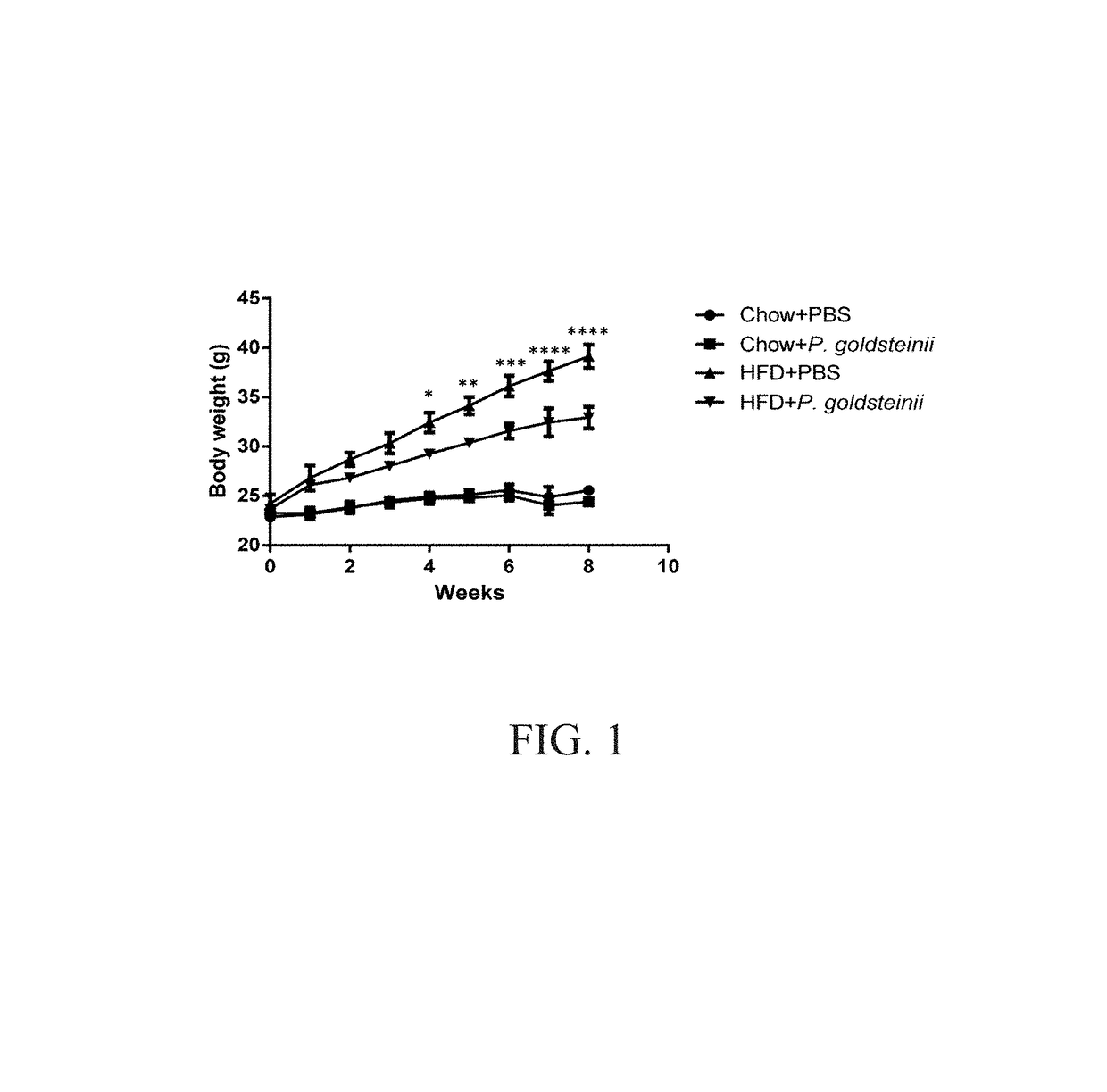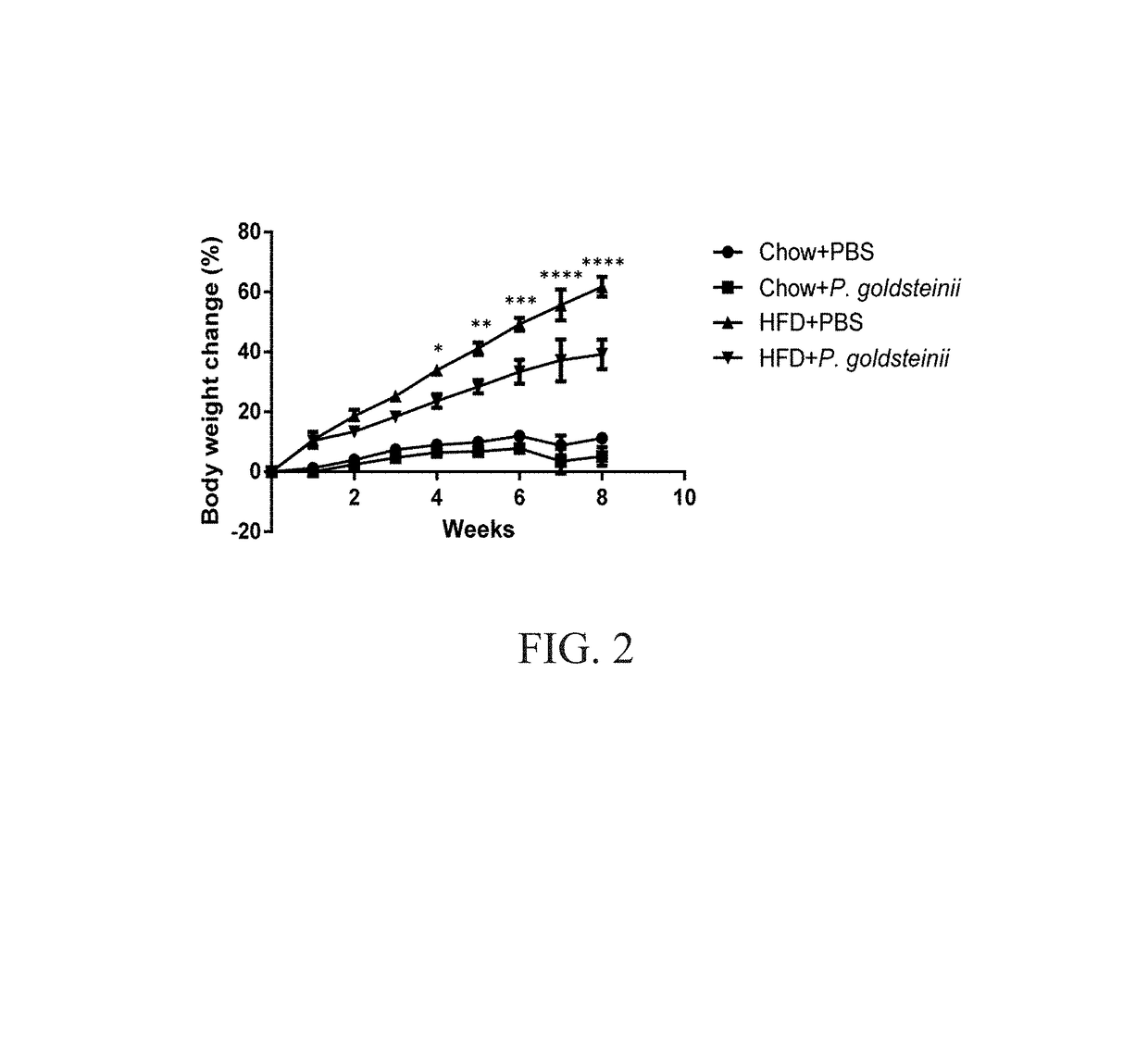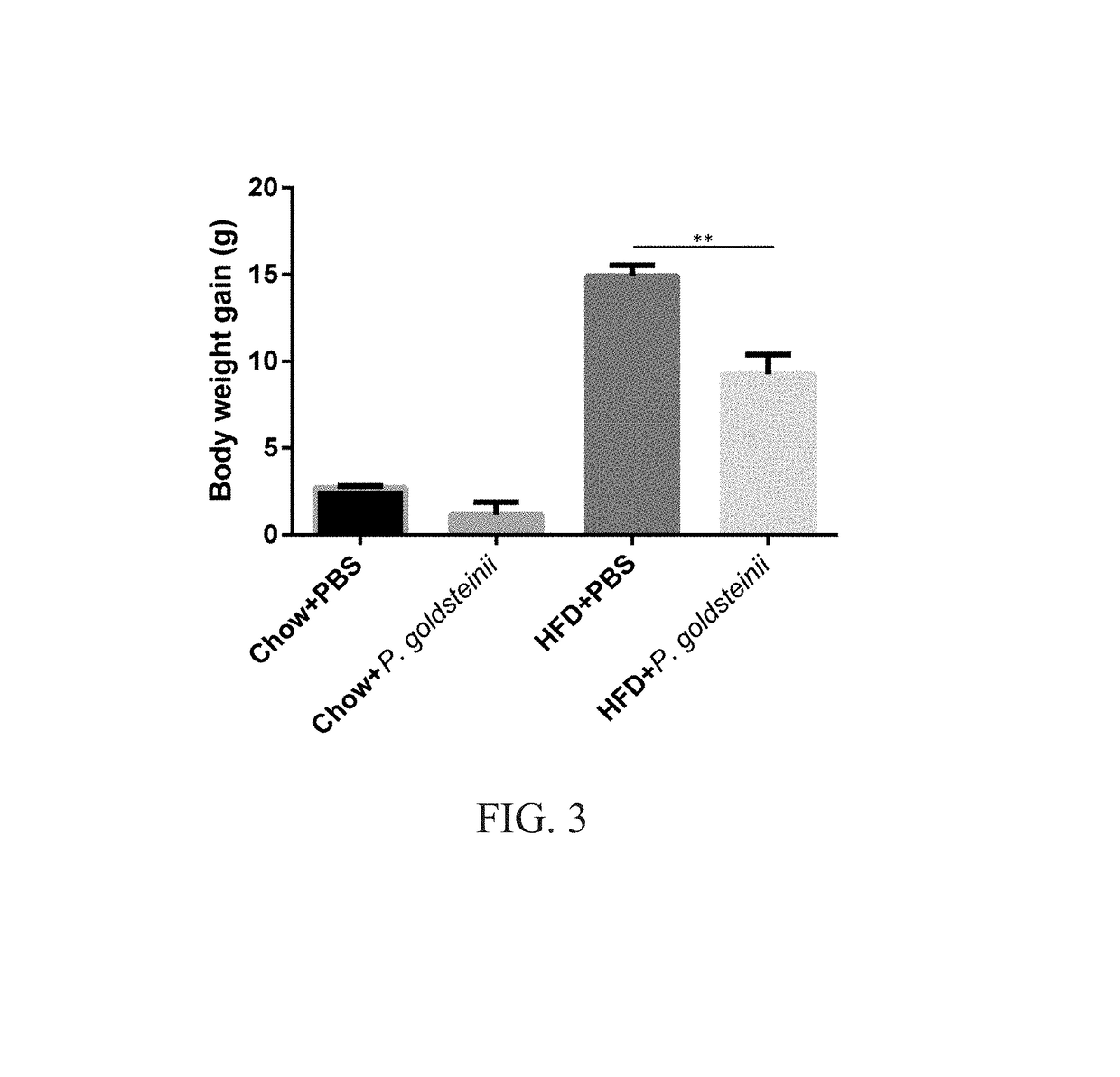Method to reduce body weight, fat accumulation and adipocyte size using Parabacteroides goldsteinii
a technology of body weight and fat accumulation, applied in the field of body weight reduction, fat accumulation and adipocyte size reduction using i>parabacteroides goldsteinii /i>, can solve the problems of reducing the risk of several health problems, and reducing the quality of life of obese individuals, so as to prevent and treat obesity, reduce body weight, prevent and treat obesity
- Summary
- Abstract
- Description
- Claims
- Application Information
AI Technical Summary
Benefits of technology
Problems solved by technology
Method used
Image
Examples
example 1
Effects of P. goldsteinii Bacterium on Body Weight, Fat Accumulation and Adipocyte Size in HFD-Fed Mice
[0033]FIGS. 1-7 show the effects of P. goldsteinii of the present invention on the body weight, fat levels and adipocyte size of chow-fed and HFD-fed mice. Feeding with the HFD increased body weight, fat levels and adipocyte size compared to feeding with chow (FIGS. 1-7). Notably, mice treated with HFD+P. goldsteinii showed reduction of absolute and relative body weight (FIGS. 1 and 2), absolute and relative body weight gain (FIGS. 3 and 4), epididymal fat (FIG. 5), subcutaneous fat (FIG. 6) and adipocyte size (FIGS. 7A and 7B) compared with HFD-fed mice. Notably, P. goldsteinii supplementation reduced the body weight of HFD-fed mice by 6.2 g compared to the HFD group (FIG. 1), representing a reduction of 22.5% of body weight (FIG. 2).
[0034]As shown in FIGS. 1-7, P. goldsteinii can reduce body weight, fat accumulation and adipocyte size in HFD-fed mice. Based on these results, the ...
example 2
Effects of P. goldsteinii Bacterium Treatment on Mean Energy Intake in HFD-Fed Mice
[0035]FIG. 8 shows the effects of P. goldsteinii treatment on mean energy intake of chow-fed and HFD-fed mice. While the HFD-PBS group showed higher mean energy intake levels compared to the Chow+PBS and Chow+P. goldsteinii groups, the P. goldsteinii treatment group did not affect mean energy intake in HFD-fed mice. These results suggest that the P. goldsteinii treatment did not affect appetite.
example 3
Effects of P. goldsteinii Bacterium Treatment on Blood Biochemical Parameters in Chow-Fed Mice
[0036]The present invention discloses the absence of effects P. goldsteinii treatment on blood biochemical parameters in chow-fed mice. The blood biochemical parameters examined include those used to assess liver functions, such as the enzymes aspartate transaminase (AST) and alanine transaminase (ALT), as well as the blood biochemical parameters used to assess kidney functions, such as blood urea nitrogen (BUN) and creatinine. Blood biochemical parameters were monitored using a biochemical analyzer (Hitachi 7080, Hitachi, Japan). As shown in Table 1, no statistical differences were noted between the blood biochemical parameters of chow-fed mice treated with either PBS or P. goldsteinii, indicating that P. goldsteinii did not affect liver or kidney functions under these conditions.
[0037]
TABLE 1Effects of P. goldsteinii Bacterium Treatment on Blood BiochemicalParameters in Chow-Fed MiceAnaly...
PUM
 Login to View More
Login to View More Abstract
Description
Claims
Application Information
 Login to View More
Login to View More - R&D
- Intellectual Property
- Life Sciences
- Materials
- Tech Scout
- Unparalleled Data Quality
- Higher Quality Content
- 60% Fewer Hallucinations
Browse by: Latest US Patents, China's latest patents, Technical Efficacy Thesaurus, Application Domain, Technology Topic, Popular Technical Reports.
© 2025 PatSnap. All rights reserved.Legal|Privacy policy|Modern Slavery Act Transparency Statement|Sitemap|About US| Contact US: help@patsnap.com



